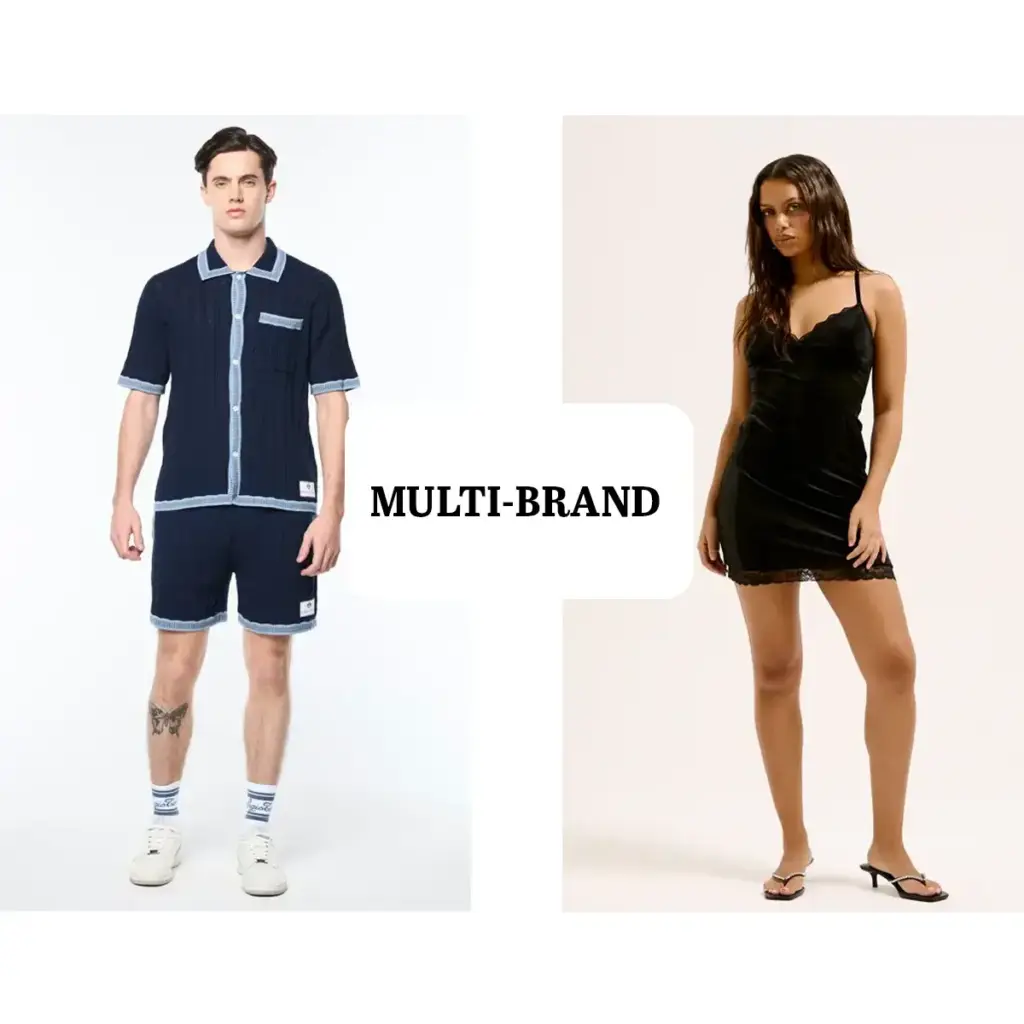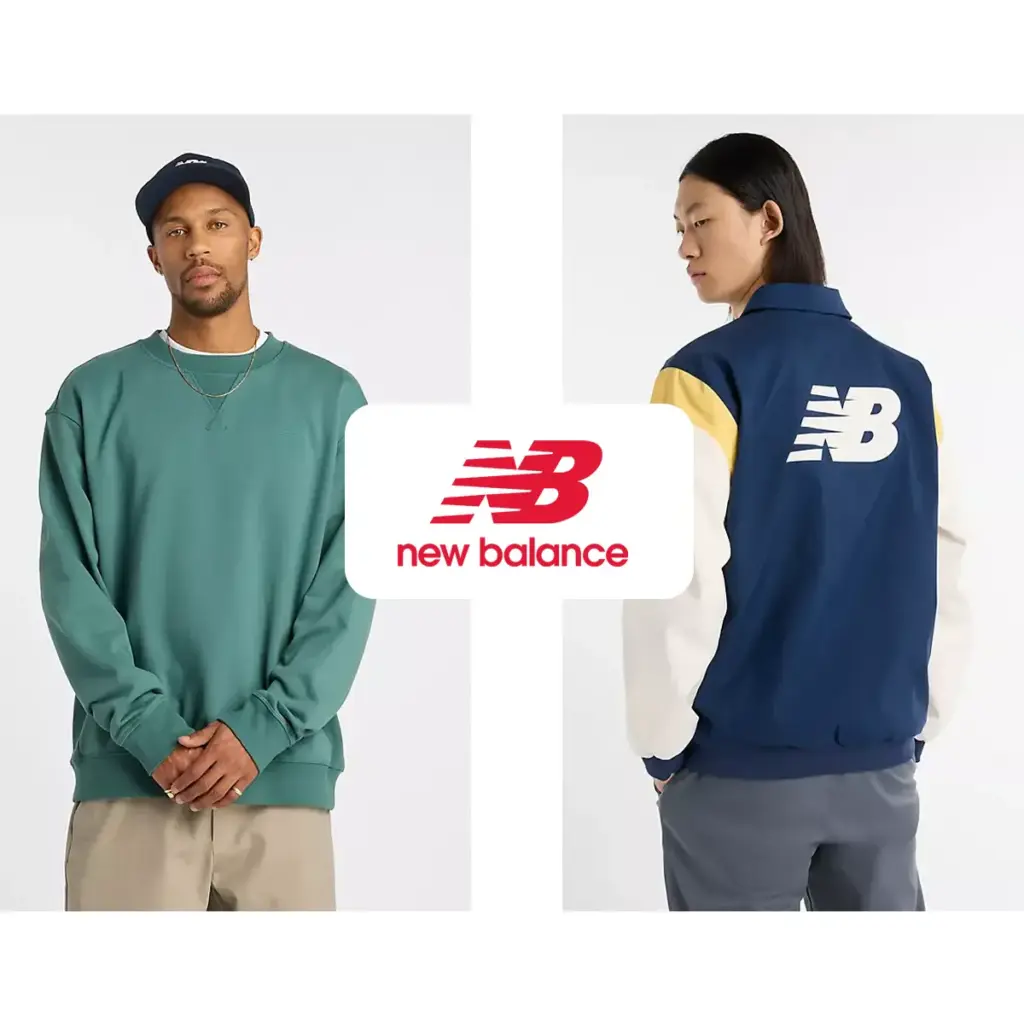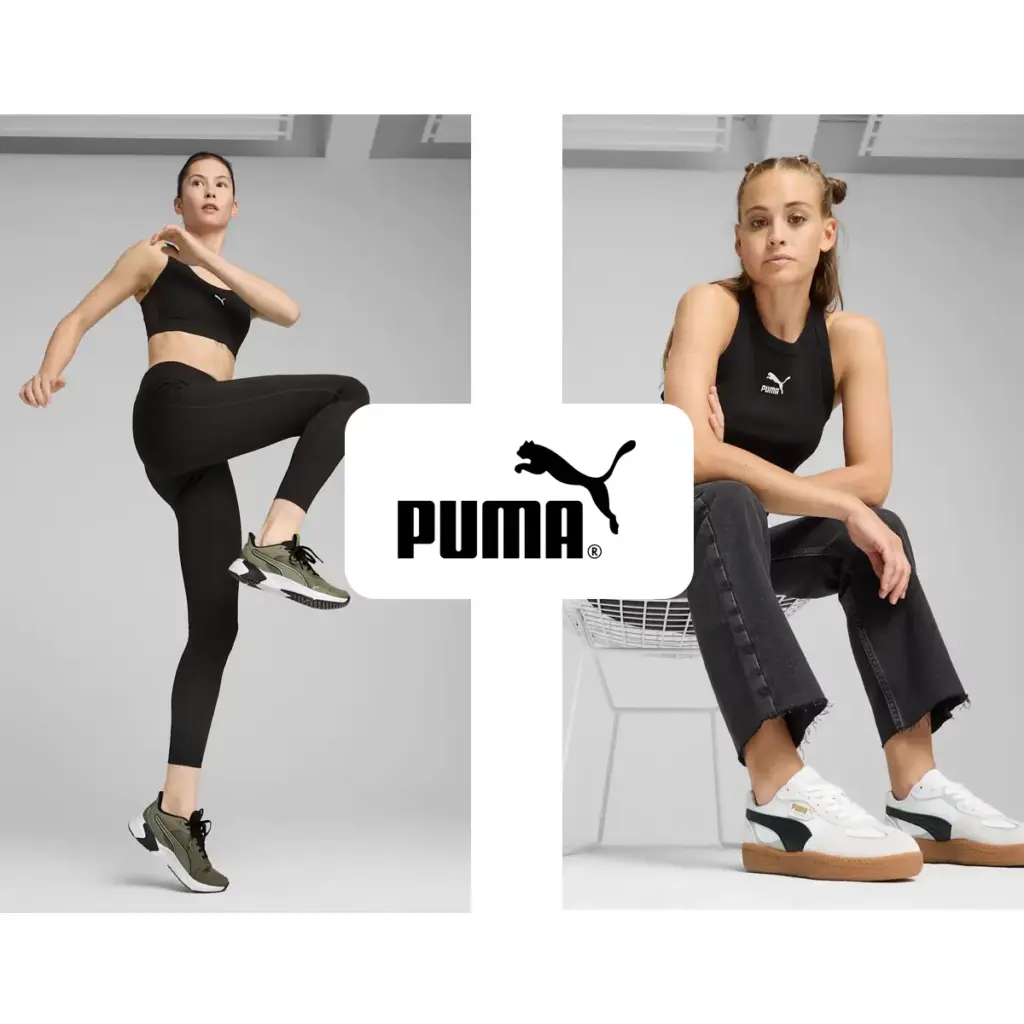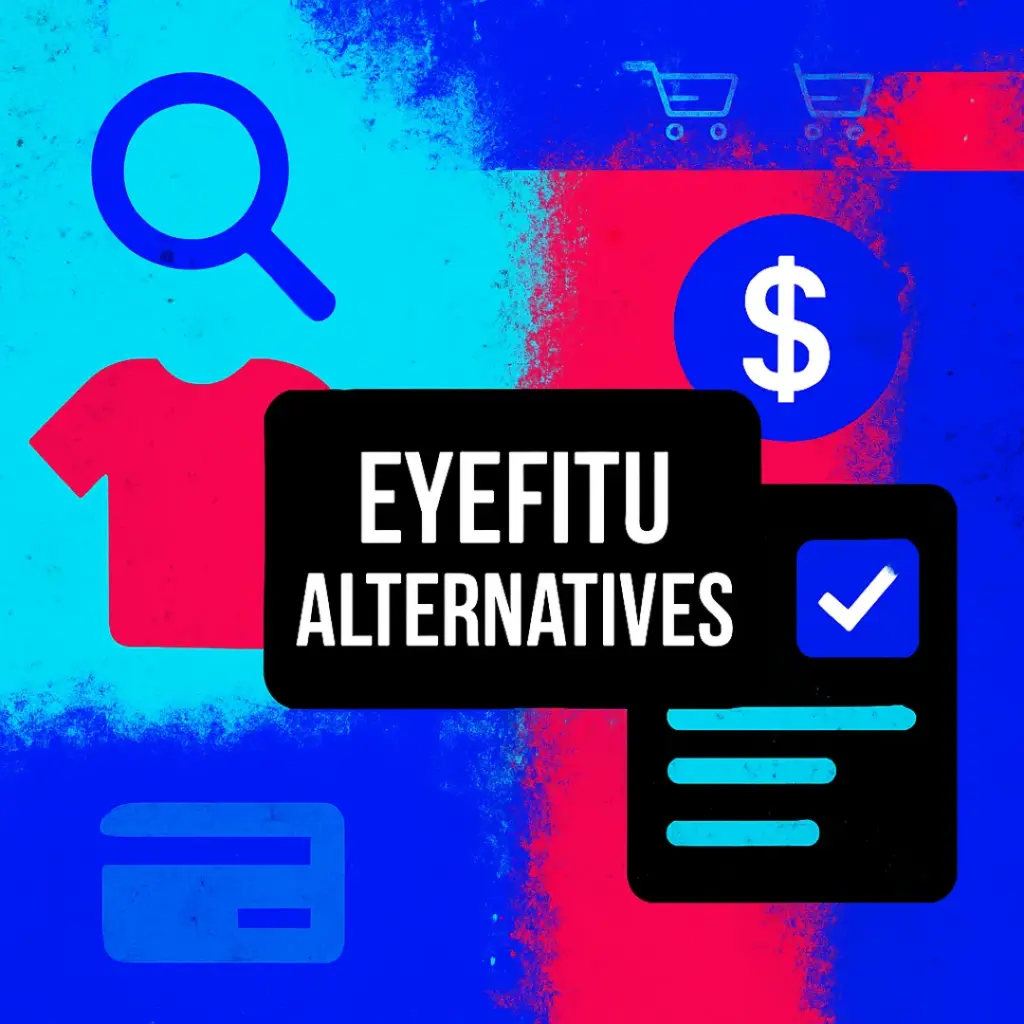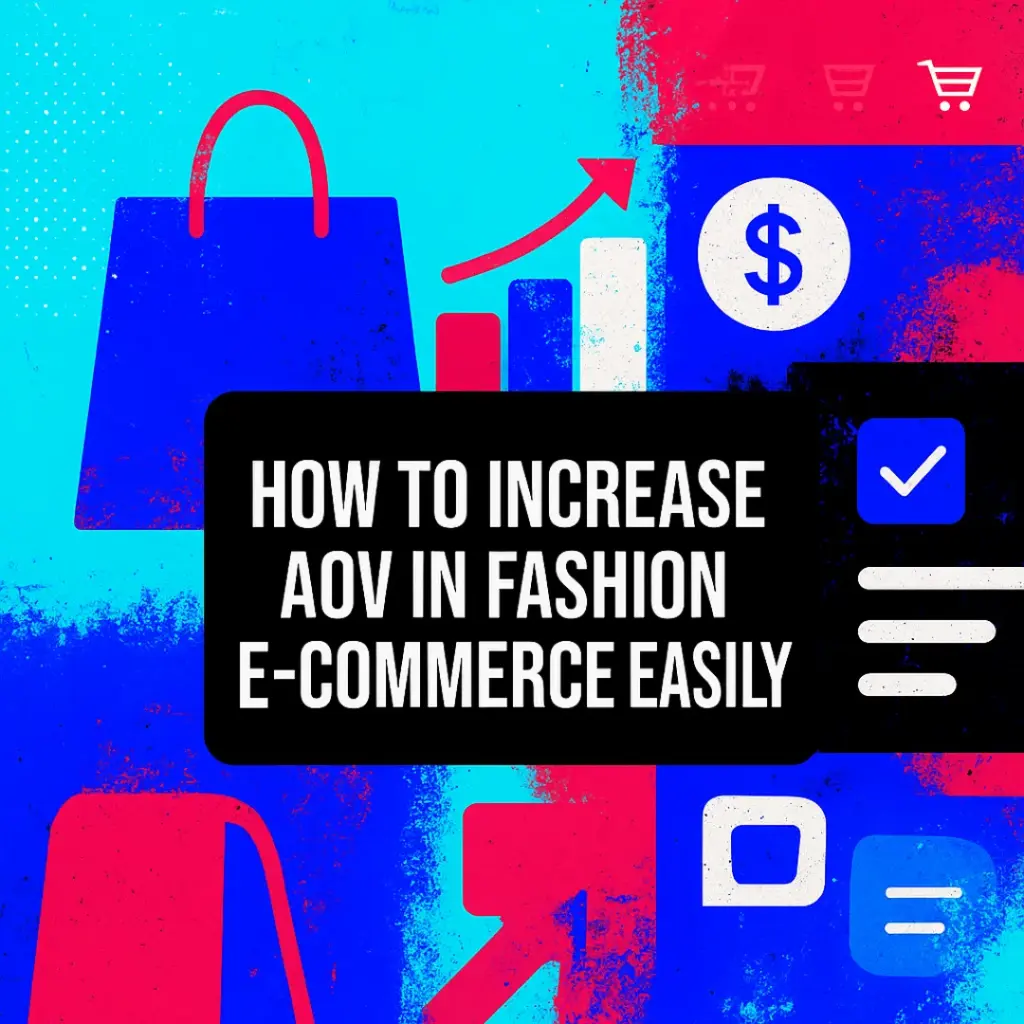Bold Metrics Alternatives
As the pressure to reduce returns intensifies across fashion e-commerce, choosing the right sizing solution becomes critical. Many offer AI-powered size recommendation platforms, but their technologies, approach to innovation, and adaptability differ significantly.
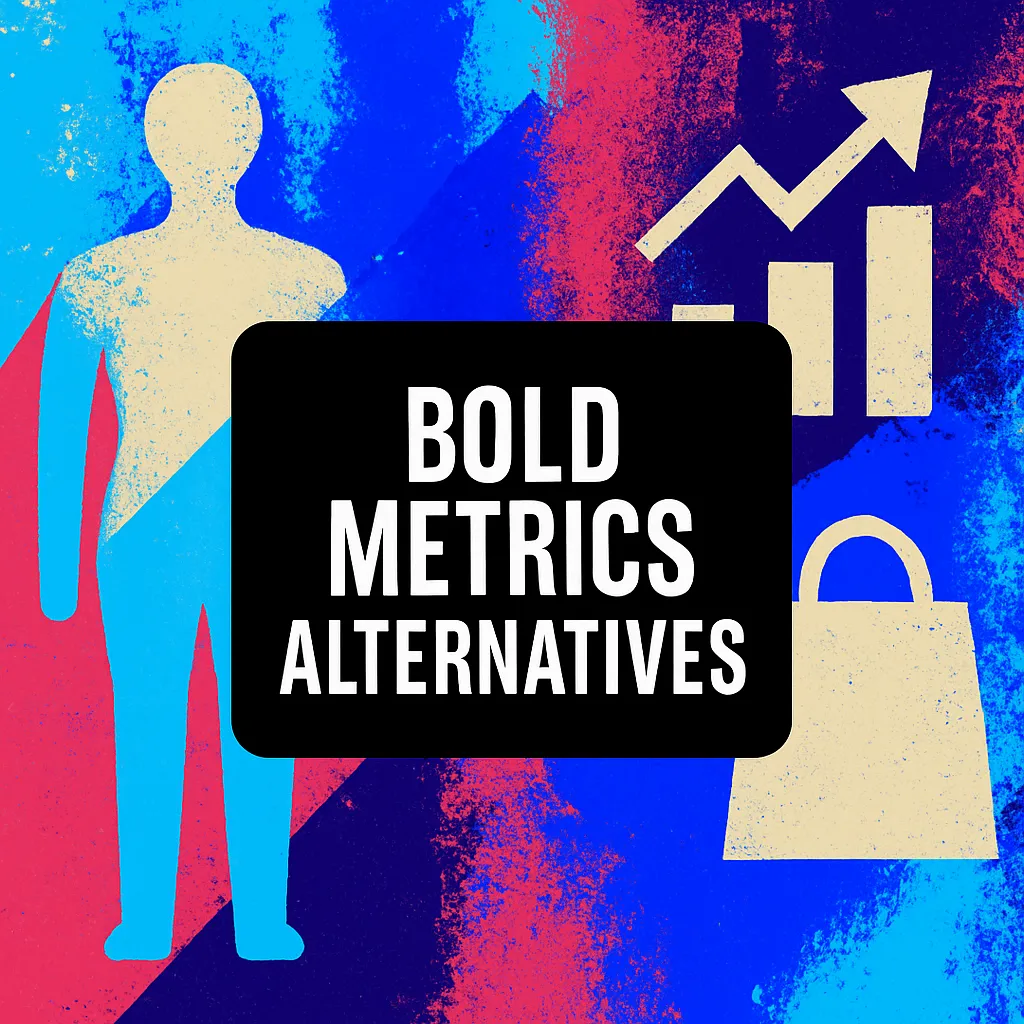
Bold Metrics utilizes a “digital twin” approach powered by proprietary algorithms. From just 4-6 basic user inputs (e.g. height, weight, age, etc.), Bold Metrics’ system generates 50+ detailed body measurements using generative AI. This extensive body model (digital twin) yields tailor-level accuracy in fit predictions. Bold Metrics analyzes millions of data points and has built a massive dataset (150+ million digital body models with 7+ billion body data points) to inform its predictions. The technology does not require any photos or scans of the shopper, a deliberate design to reduce friction. Instead, Bold’s machine learning infers body shape from survey inputs and then maps the shopper’s digital twin against garment specifications to recommend the best size. Overall, Bold Metrics’ tech was groundbreaking in the late 2010; however, it largely relies on its original predictive models and body-data approach, which some analysts now consider outdated relative to newer AI methods.
While Prime AI’s sizing solution was built in the era of deep learning and is characterized by proprietary neural networks and adaptable AI architecture. It uses advanced deep learning models to analyze multiple data inputs, not only basic body measurements or user-provided info, but also each retailer’s product data and historical outcomes. Prime AI’s Clothing Size Finder employs neural networks to process shopper’s attributes alongside garment specifications (fit, materials, clasp etc.) yielding a personalized size recommendation for each item, even down to colour level, since sizing quite often differs at colour level. Importantly, Prime AI can incorporate additional data signals such product reviews. Prime AI’s ML pipeline is built to learn and improve continually, the Pro version of the solution can train itself on the retailer’s own inventory data, product compositions, customer reviews, sales and returns statistics to refine the accuracy further.
The PRO version of Prime AI introduces a two-pillar strategy for maximizing impact:
Zero-Input Size Finder: No quiz, no user input. Automatically provides a recommendation based on past purchases, returns, and CRM data. Proven 99% accuracy for returning customers.
Quiz-Based Size Finder: For new users, a smart quiz powered by a different AI engine and cross-learning from “zero-input” data. These systems work together, sharing insights, ensuring consistency, and improving coverage.
Together, these pillars influence more than 50% of a retailer’s transactions a critical threshold for achieving meaningful return reduction.
In essence, Prime AI brings a modern, adaptive AI that goes beyond static algorithms, it leverages deep learning on both body data and real commercial outcomes (returns, exchanges) to keep improving size predictions. This depth of machine learning integration gives Prime AI a more predictive and dynamic capability than Bold’s relatively self-contained digital twin model. Prime AI is described as a “cutting-edge AI” platform by industry observers, and it offers customization of the AI to each brand’s specific sizing nuances (more on that below).
Both platforms are rooted in AI, but Prime AI’s technology is newer and more adaptive. Bold Metrics relies on a robust but established ML model (digital twin generation from a fixed Q&A) perceived by some as behind the curve now. Prime AI employs state-of-the-art neural networks, continuous learning from data, and even optional computer vision, aligning with the latest AI trends to deliver a more flexible and forward-looking solution. For a premium retailer seeking the most sophisticated machine learning depth, Prime AI holds the edge in technical modernity.
Technology Sophistication & Machine Learning Depth
Fit Prediction Accuracy & Adaptability to Body Diversity
Bold Metrics claim to compute over 50 body measurements per shopper, it can match the customer to the fitting size in a brand’s lineup with high precision. Bold Metrics in case studies report that its recommendations drive an average 18% reduction in fit-related returns when shoppers follow the suggested size (compared to those who don’t). Bold’s approach is inherently adaptable to different body types within the bounds of its input questions, it infers a body shape profile from answers. Typically, the widget may ask not only for height/weight but also additional shape indicators (e.g. body type ou proportions) to handle diversity. For instance, Bold’s system can determine body shape categories and critical measures (chest, waist, hips, etc.) from the inputs. However, since it doesn’t use actual photos or scans, its accuracy for very atypical body shapes depends on the user answering the questions accurately and on the underlying data model’s coverage of such body profiles. Bold Metrics does include outlier detection in its API, flagging improbable input combinations (like very high weight with very small waist), which helps ensure bad data doesn’t lead to bad recommendations. Once a shopper’s digital twin is created, Bold Metrics simulate how each clothing size would fit that body, even showing contextual fit visuals or notes (e.g. which areas might be snug or loose). This gives shoppers insight into fit, not just a blind size suggestion, and caters to personal fit preference (for example, a customer who knows they prefer a looser fit might size up if they see the recommended size would fit very tightly at a certain point). Extremely unique body shapes that don’t align with the assumptions in Bold’s model might be less perfectly served, though Bold’s claim of consistently outperforming other methods implies broad effectiveness across body types.
Prime AI also delivers strong fit accuracy, with documented results of retailers seeing on average 34% reduction in fit-related returns when shoppers follow the suggested size (compared to those who don’t) after implementing Prime AI’s size finder. Alongside conversion rate increases around 10% and even higher average order values, indicating shoppers trust the fit and buy more. Prime AI’s accuracy stems from a few factors: its neural network is trained on a wide array of body measures and real purchase outcomes, and it is further calibrated to each brand’s sizing. Prime AI emphasizes the ability to fine-tune the algorithm to a retailer’s specific size charts and customer profiles. This means that if a brand’s garments run small or large, or have particular cut differences, Prime AI can adjust the recommendations accordingly so the “XL” in one brand isn’t treated the same as “XL” in another. This brand-specific modeling boosts accuracy, especially for retailers with unique fit philosophies. Additionally, Prime AI’s adaptability to different body types is enhanced by its more granular data capture on product and shoppers. By capturing a bit more, Prime AI can better fit those who deviate from the “average” height-weight distribution. Furthermore, Prime AI’s Pro version continuously learns from actual customer behavior, it ingests sales and returns data to identify any mismatch patterns and then adapts the size prediction logic. This means that over time, the system gets smarter about, say, a certain jacket that many people with broad shoulders returned when sized Medium, it might start recommending Large for those builds in that SKU. This feedback loop is a modern ML advantage, yielding ever-improving accuracy and an ability to handle a wide variety of body shapes and fit preferences. Prime AI is also capable of multi-dimensional fit guidance: it can show international size conversions simultaneously (helpful for global shoppers) and can present the recommended size in context (e.g. alongside a fit description or alternative sizes if the user prefers a different fit). While Prime AI doesn’t necessarily require photos or scans either (keeping UX simple), it has the technical capability to integrate such data if a retailer wanted a hybrid approach for even finer accuracy.
When it comes to accommodating different body types, both solutions strive to personalize the fit. Bold Metrics relies on its vast “digital twin” database to cover the spectrum of shapes and sizes, and flags inputs that are outliers. Prime AI explicitly allows per-product calibration for instance, it can treat a “slim fit” shirt differently from a “relaxed fit” shirt, adjusting the size advice to the intended style and the customer’s body profile. This adaptability is crucial for premium apparel retailers who often have varied cuts and want a precise fit recommendation for each. Moreover, Prime AI’s team offers to deeply tailor the solution for each client if needed, ensuring that the size recommendations align with the brand’s own fit philosophy (e.g. if a luxury brand wants to offer on the side of a more generous fit for comfort, or vice versa). In summary, both platforms improve fit accuracy and reduce returns, but Prime AI’s approach of leveraging brand-specific data and continuous learning can make it more adaptive to niche use cases and evolving patterns. Bold Metrics reduces refunds to certain extent for the general population and has proven results, yet Prime AI’s accuracy will increasingly excel in scenarios requiring granular customization or when serving diverse, global customer bases (owing to its ability to handle multiple languages, regional sizing standards, different fits, styles and all sorts of other variations such as season, colour seamlessly).
L'équipe de Prime AI est prête à personnaliser profondément la solution, ce que les grandes marques avec des identités de marque fortes apprécieront (vous pouvez vous assurer que l'apparence correspond à votre marque, et que les recommandations s'alignent avec leur philosophie d'ajustement). De plus, le support linguistique étendu de Prime AI est indispensable pour les marques mondiales opérant dans de nombreuses régions. Prime AI peut déployer une solution à l'échelle mondiale.
3DLOOK peut intéresser les grandes marques particulièrement axées sur la vente au détail expérientielle ou des catégories comme les vêtements intimes, où les gens ont le temps et sont prêts à passer du temps à prendre des photos détaillées pour obtenir un essayage visuel. Cependant, les grandes marques considéreront que demander aux clients de se photographier pourrait réduire le taux d'utilisation ; par conséquent, elles pourraient offrir 3DLOOK comme un service agréable à avoir tout en ayant toujours un recommandeur plus facile (comme True Fit ou Prime AI) pour la masse.
En conclusion, les grandes marques de mode adoptent souvent une approche à plusieurs volets : elles peuvent utiliser True Fit ou Prime AI pour des recommandations de taille générales à tous, et superposer une technologie de niche comme 3DLOOK pour les clients qui désirent ce niveau supplémentaire d'engagement. La capacité de Prime AI à s'adapter aux nuances de taille spécifiques à la marque et à fournir des analyses robustes en fait un concurrent solide face aux autres dans cet espace. La clé pour les grandes marques est la fiabilité du fournisseur et l'impact des solutions telles que True Fit, Bold Metrics, EyeFitU et Prime AI ont tous démontré le ROI dans des déploiements à grande échelle, donc la décision peut se résumer à laquelle s'aligne le mieux avec les systèmes internes de la marque et la vision de l'expérience client.
User Experience & Interface Design (Desktop & Mobile)
A sizing solution lives or dies by its user experience (UX) – shoppers must find it easy, fast, and trustworthy. Both Prime AI and Bold Metrics recognize this and offer lightweight interfaces integrated into the product detail page of e-commerce sites.
Bold Metrics offers what it calls the Smart Size Chart (SSC) – an embedded widget typically accessed via a “What’s my size?” or “Size Help” button on the product page. The SSC interface has undergone a thorough redesign in late 2022 to ensure a modern, intuitive experience. Bold’s product team conducted extensive user testing across age groups and shopper profiles, optimizing wording, imagery, and flow for clarity and speed. The result was “a clean, modern, customizable interface that delights shoppers” according to Bold’s Chief Product Officer. In practice, when a shopper clicks the Bold Metrics “Find My Size” prompt, they are guided through a short quiz of 4 – 6 questions. These questions are optimized to be answerable in just a few clicks or taps for example, selecting a height range, a weight range, body shape illustrations, age bracket, and perhaps fit preference. The interface is mobile-responsive and designed to work well on both desktop and small screens (Bold’s user tests specifically ensured even inexperienced mobile shoppers could use it easily). So, this was done in 2022, when Prime AI already had this in 2018. After input, Bold Metrics instantly presents a recommended size (e.g. “We recommend Size M for you”) along with additional context: it shows how that size will fit in key areas or a confidence level. Bold also smartly provides an element of personalization in the UI it might display messages like “Size M will have a slim fit in the shoulders and a relaxed fit at the waist for you,” leveraging the digital twin data to help the user visualize the fit. Another UX benefit: Bold’s interface aggregates multiple units and size scales. It can show the suggested size and simultaneously list equivalent measurements or international size conversions (e.g. US 8, UK 12, EU 40) so the user doesn’t have to manually consult a chart. Bold’s focus on not overwhelming the shopper. But Prime AI’s Zero Input is totally another level of not overwhelming and is totally fictionless no quizzes, not body measurement inputs.
Prime AI’s interface is equally focused on simplicity and seamless integration. For small and mid-sized brands on Shopify Prime AI provides free app Size Finder Lite App. But most sophisticated is Size finder PRO provides a zero-input size finder. Going back to the Size Finder Lite – which can be installed and live in minutes, adding a “Find Your Size” widget without any coding. This widget is designed to replace static size charts entirely, appearing on the product page as an interactive prompt. The Lite UI flow is similar to Bold’s in that it asks a handful of basic questions (e.g. height, weight, maybe age and body shape) and returns an immediate size recommendation. Prime AI’s design emphasizes speed: helping shoppers “find the best fitting size in seconds”. The interface is clean and straightforward for example, one of Prime’s screenshots shows a step where a female shopper can select her bust shape from an illustration, indicating that the UI can capture specific body shape info via intuitive image. Prime AI is fully responsive and tested on mobile; the Shopify app listing explicitly highlights that it “Works with the latest themes” and is mobile responsive. In fact, mobile usability is critical, as many fashion shoppers are on phones Prime’s widget layout uses simple dropdowns or sliders suitable for touch input. For international audiences, Prime AI’s interface supports multiple languages out-of-the-box. This is a big UX advantage for global retailers: the widget can automatically present questions and results in the user’s local language, ensuring clarity. It also displays size conversions (EU, UK, US, etc.) in one view alongside the recommendation, so shoppers can quickly confirm the suggestion relative to sizes they are familiar with similar to Bold in that respect. Where Prime AI’s UX truly differentiates is in its frictionlessness for repeat users: the Version Pro of Prime AI’s Size Finder can offer “Zero-Input” sizing. This means that if enough data is available from context (for instance, the shopper is logged in and has past purchases or a saved profile), the system can directly display a size recommendation without the user having to answer questions each time. In a scenario where a returning customer comes to a product page, Prime AI could instantly show “Your best size: M” (perhaps with an option to adjust if needed) by leveraging their known body profile and the product’s data. This zero-click approach is cutting-edge in UX – eliminating even the minimal quiz to streamline the experience. Bold Metrics does allow returning users to skip re-entering data (it can store a cookie or profile so the user doesn’t answer again), but Prime AI goes a step further by integrating with CRM/ERP data to pull in any known measurements or purchase history to automate the recommendation. Additionally, Prime AI emphasizes customizability of the UI to match the brand’s look and feel the Prime team often works with large clients to deeply integrate the tool in a way that the style and phrasing aligns with the brand’s voice. For example, luxury brands can skin the widget so it doesn’t look like a third-party plugin but a natural part of their site’s design.
Prime AI Size Finder Pro also offers alternative product recommendations, when a product is out of stock in a shopper’s size, Prime AI doesn’t let the journey end. Prime AI’s technology instantly recommends alternative products that are in stock and guaranteed to fit, based on the shopper’s body profile and fit preference. Prime AI understands the entire product catalogue, including how each item fits, regardless of size naming or brand differences, so it can match customers to the right alternatives in real time. Retailer can fully customise the recommendation logic: show only products from the same brand, or same category, or even prioritise same colour across brands. Want to go further? Use Prime AI’s visual search technology to recommend products that look similar based on image and attribute analysis, while also ensuring they’re available in the shopper’s size. This seamless experience keeps customers engaged, reduces drop-offs, and recovers lost sales, all while maintaining a consistent and personalised fit experience.
Another Prime AI Size Finder PRO feature is Shopper Nudging. If a customer tries to order a size that data suggests will be returned, Prime AI gently nudges them toward a better fit, before they complete the purchase. This reduces preventable returns and builds trust by being proactive.
Both solutions prioritize a non-intrusive, user-friendly interface, but Prime AI’s UX strategy is tuned for the modern shopper’s expectations: minimal effort (even zero effort in Pro), multi-language support, alternative product recommendations, customer nudging and highly flexible presentation, also is 100% customisable based on retailers request, retailer can provide mock-ups and Prime AI will replicate entire UX as retailer wishes. Also Prime AI can tweak questions that are being asked to customer, add remove questions if there is a need, accordingly AI algorithms will be adjusted to deliver desired results, if let’s say products being return for one specific reason, Prime AI. can adapt entire system to kill the specific return reason problem, Bold Metrics has honed its interface with years of testing and it certainly provides an excellent experience (users rated it 4.5/5 for ease of use, and 70% preferred it to old static charts). Both Bold Metrics and Prime AI Size Finder are far superior to guessing from a generic size table. The difference is that Prime AI is pushing the envelope on reducing user input and blending into the personalized ecommerce journey, and being 100% customisable to retailer’s needs both at front and back end, whereas Bold is iterating on a traditional quiz model. For a premium retailer where brand experience is paramount, Prime AI’s ability to white-label and deeply integrate might be appealing, as is the prospect of a one-click or zero-click size recommendation for loyal customers. Meanwhile, Bold’s interface is proven and very polished, but ultimately still recognizable as a third-party quiz overlay in many cases.
Neither solution is restricted by device; both are optimized for all screen sizes. On desktop, they typically appear as a popup or sidebar modal over the product page. On mobile, they expand to full screen for easy reading. The “seamless customer experience” is a selling point for both, which one is more seamless is for you to judge.
Integration Capabilities & API Modernity
Bold Metrics is offered as a SaaS platform for enterprise, and integration is typically done via their API or by embedding their Smart Size Chart script. Bold provides extensive integration support for major e-commerce platforms and custom sites, it has pre-built support or experience integrating with Shopify, Magento, WooCommerce, BigCommerce, Salesforce Commerce Cloud, Oracle ATG, and others. Essentially, a retailer can add Bold Metrics either by including a small JavaScript snippet on product pages (which triggers the widget and calls Bold’s APIs behind the scenes) or by deeper API integration for more control. Bold’s Developer Portal documents a RESTful API where clients use a client_id et user_key to authenticate and send requests (e.g. to get size recommendations for given inputs). The API endpoints handle the measurement predictions and return recommended sizes which can then be shown on the site. Bold’s API is robust, though slightly old-school in style (API keys via query parameters). The platform can also integrate purchase data via APIs for example, Bold has a purchase and returns API that retailers can use to feed back what was bought and whether it was returned, allowing Bold to layer this data into analytics (and possibly to refine the algorithm manually or via their services). Bold Metrics touts a “quick integration and supportive onboarding” for clients. In practice, an enterprise client will work with Bold’s team to configure the solution: upload or connect product data (garment measurements for each size/SKU need to be provided to Bold’s system), set up the storefront widget, and calibrate sizing as needed. Bold’s integration often involves mapping the retailer’s size charts into Bold’s system and possibly a testing phase to validate recommendations. It’s not an app-store click-button, but for capable development teams Bold’s API and documentation make it straightforward. One could note that Bold requires manual API key management and has rate limiting policies like 25 requests/sec unless negotiated higher standard for enterprise APIs. Bold supports all common deployment models (cloud, on-prem if needed, etc.) and any device, which is reflected in the SourceForge comparison as well (showing Bold works on web, mobile, cloud, etc.). Overall, Bold Metrics integration is characterized by enterprise-grade stability, but process tends to be hands-on. Smaller brands often find Bold’s setup “overkill” for their needs.
Prime AI has embraced a more modern, plug-and-play integration strategy, particularly to capture small and mid-market clients. The example is Prime AI’s Shopify App (Size Finder Lite) which is available for free and can be installed directly from the Shopify App Store. This app provides no-code integration so merchant can simply add it to their store, configure a few settings (e.g. chooses which product categories to enable it on, calibrate sizing if desired), and the widget goes live. This ease of integration significantly lowers the barrier to entry; as noted, even merchants with limited tech resources can deploy the Prime AI Lite solution “in minutes”. For more complex needs (the Pro version), Prime AI offers integration via API or SDK similar to Bold, but with a focus on customization and flexibility. Prime AI can integrate with a retailer’s ERP and CRM systems to pull in customer data or to push size recommendation data back into the retailer’s analytics. This kind of integration means Prime AI can become a component of a larger tech ecosystem for example, feeding size recommendation info into a custom product detail page layout or using it in a clienteling app in-store. The API design of Prime AI is not detailed in our sources, but given the company’s modern approach, one can infer it’s a RESTful or GraphQL API with secure keys or OAuth. The Prime AI team is said to be very willing to tailor the solution for each client, which in integration terms means they can adapt to unique platforms or requirements (e.g. integrating with a bespoke e-commerce system or adjusting the data ingestion to the brand’s format). Prime AI’s platform is also cloud-based and globally deployable it supports multi-language and multi-region from a single integration. For example, a retailer operating in North America, Europe, and Asia could use one Prime AI integration and have it serve all locales with localized language and sizing units, which is highly efficient. The API modernity of Prime AI is reflected in features like “zero-input” mode which implies the API can utilize stored profiles and doesn’t always need a fresh call for each user interaction (it can work server-side as well to pre-compute recommendations). Also, the Prime AI system learns from data like reviews and returns, which suggests it either offers endpoints to input that data or has automated connectors to e-commerce platforms to fetch it. This is a modern “API-first, data-driven” philosophy. In terms of platform support, Prime AI can similarly run on any website or device (SourceForge notes it’s available via web, mobile, on-prem or cloud deployments, like Bold).
A notable difference is approachability: Prime AI caters to both ends of the market. Small retailers can start with zero cost and zero development (Lite app), something Bold doesn’t offer, Bold’s solution typically entails a contract and integration project, which small businesses often can’t afford or implement easily. This modern distribution (app store, freemium model) positions Prime AI as more accessible and “API-modern” in the sense of quick adoption. For large retailers, Prime AI’s custom integration is on par with Bold’s, but Prime’s willingness to deeply customize can mean integrations that do more than the standard (for example, combining Prime AI with a virtual try-on AR tool, as was done in a partnership with Zyler for a holistic fitting room experience). That kind of project showcases Prime AI’s integration flexibility it can work alongside other innovative tech in a modular way.
Both provide APIs; Bold’s is well-documented (with specific endpoints for different solution modes like “Virtual Tailor” for made-to-measure suits, “Virtual Sizer” for general sizing, etc. as seen in their docs menu). Prime AI’s documentation isn’t publicly cited here, but the capabilities described (learning from CRM/ERP, etc.) suggest a comprehensive API that can ingest and output a variety of data. From a modernity perspective, Prime AI’s support for integration into headless commerce setups or omnichannel systems is a plus. Its multi-language single deployment feature also indicates a thoughtfully designed system for integration across locales.
In summary, Bold Metrics integration is proven and broad but geared towards enterprise projects (with attendant time/cost), using conventional API methods. Prime AI integration is lighter-weight and more modern, exemplified by one-click app install and by an emphasis on flexibility and data connectivity. For a premium retailer with a sophisticated tech stack, Prime AI’s API will slot in neatly and even feed data back to other systems for synergy. For a retailer with fewer resources, Prime AI provides an easy on-ramp that Bold lacks. This makes Prime AI not only technically sound but also strategically simpler to adopt and maintain.
Product Innovation Pace vs. Platform Stagnation
One of the clearest distinctions between Prime AI and Bold Metrics is the trajectory of innovation.
Bold Metrics emerged around 2017 and quickly established itself in AI sizing, but its core approach has remained relatively consistent. Its major innovations in the past few years have been incremental improvements or extensions of the original platform. For instance, Bold rolled out the redesigned Smart Size Chart interface in 2022 to modernize the look and incorporate user feedback a valuable update but essentially a UI/UX enhancement rather than a new capability. Bold has also introduced features like “Multi-SSC” (multi-product size recommendations, allowing a shopper to get sizes for an outfit in one go), and Apparel Insights™ dashboards to leverage the collected body data for business intelligence. These additions show that Bold is expanding its value proposition (using the data for design, merchandising, sustainability insights) a strength for brands that want to harness data. However, the fundamental sizing engine the digital twin model from Q&A inputs appears largely unchanged. Industry observers have noted that Bold Metrics’ technology feels “outdated and behind others.” In context, this likely refers to Bold’s absence of some newer AI techniques or its slower adoption of novel approaches like computer vision or hybrid models. Bold Metrics has also maintained a primarily enterprise focus, which sometimes gives the impression of a stagnant, heavy platform relative to nimble startups. It’s telling that in analyses of fit tech for large brands, Bold is acknowledged for its experience but critiqued for lagging innovation: “Bold Metrics… wants to harness body data for broader insights, but [its] technology feels outdated”. Essentially, Bold perfected a solution in 2017-2019 and has been refining it since, but competitors are now bringing fresh ideas to the table.
In terms of recent innovation, Bold’s notable moves include partnering with returns solution providers to create feedback loops (blending returns data into their platform), and possibly exploring contactless in-store measuring (they mention a “Contactless Fit™” solution potentially something like using a shopper’s device sensors or a body scan kiosk, though details are scarce). But compared to the rapid advancements in AI (e.g. deep learning breakthroughs, new data sources), Bold’s platform today is fundamentally the one from a few years ago, tried-and-true, but not dramatically expanded. The company’s messaging now leans heavily on its large data trove (millions of digital twins) and on sustainability benefits, rather than on cutting-edge new features. This can be seen as a form of platform stagnation; it’s reliable but not as exciting or fast-evolving.
In contrast, Prime AI was founded in 2018 and positions itself as a next-generation solution. It has shown a strong pace of innovation in a short time. One evidence is the split of its sizing product into Lite and Pro versions, catering to different market segments a strategy that itself is innovative in this space. Prime AI introduced a free Shopify Lite app to attract widespread usage, something unheard of from older players. This not only demonstrates modern SaaS thinking but also allows Prime AI to rapidly iterate based on feedback from many merchants (since adoption barrier is low). On the feature front, Prime AI’s Pro version introduced the concept of zero-input sizing eliminating the user quiz entirely when possible. This leap is quite forward-looking, leveraging data integration to make the experience seamless. It shows Prime AI is not afraid to rethink the paradigm (moving beyond the standard “ask questions” approach that every other fit tool, including Bold, has used). Additionally, Prime AI has been innovative in combining technologies: for example, integrating with virtual try-on tech (like augmented reality fitting rooms via Zyler) to create a hybrid solution for a luxury retailer. This indicates an agile and experimental mindset – Prime AI is willing to collaborate and fuse capabilities to push the envelope of what a sizing solution can do (becoming part of a larger “digital fitting room” concept).
Prime AI’s platform also doesn’t stop at clothing size recommendations. The company has developed complementary AI products such as visual search (“Find clothes by picture”) and an AI-generated photoshoot tool for apparel, shoe size finder matching foot picture to shoe SKU, which can synergize with the size finder. This breadth of innovation suggests Prime AI is not a single-purpose tool but a growing AI retail platform. It is continually adding new features that are relevant to e-commerce teams (which keeps the platform fresh and more future-proof).
Moreover, Prime AI is heavily focused on data-driven improvement. Its promise to leverage a client’s own data (reviews, returns, etc.) means the product gets better over time for that client. Bold may analyze such data too, but Prime AI explicitly builds it into the product offering (the Pro version “Prime AI learns exclusively from your actual inventory… and other data points” to deliver “unmatched accuracy”). This kind of machine learning driven enhancement is exactly what modern AI companies excel at and legacy ones sometimes struggle with. In effect, Prime AI’s solution evolves with each deployment, reducing chances of stagnation.
From a market perception standpoint, Prime AI is seen as a “rising star” in fit tech for large brands. It has been gaining recognition as an alternative to long-time players like True Fit, Bold Metrics and others by promising cutting-edge accuracy and customization. There’s a sense in the industry commentary that new deployments are tilting toward more modern solutions. For instance, one analysis suggests large brands might pilot newer solutions like Prime AI even if they have Bold or True Fit, to see if they offer better performance or flexibility.
In terms of platform adaptability, Bold Metrics has a specific niche (AI sizing via survey). Prime AI is more adaptive, handling scenarios from SMB to enterprise and even marketplace models (where cross-brand sizing is needed). In a marketplace context, it’s noted that Prime AI is very flexible and modern, able to calibrate each brand’s rules and handle many brands in one engine, whereas Bold Metrics would be less straightforward for multi-brand use (each brand might require separate input sessions). This adaptability is a form of innovation building a solution that covers new retail paradigms (like marketplaces) without breaking a sweat. Bold’s model, being older, was not originally designed with multi-brand personalization in mind.
To sum up, Bold Metrics tends toward platform maturity with slower innovation, and could risk platform stagnation. Prime AI shows a faster innovation cycle and a trajectory that aligns with cutting-edge retail tech trends. For a premium retailer aiming to stay ahead, Prime AI offers a future facing partnership, Prime AI is actively growing its feature set and refining its AI, which means a retailer will benefit from improvements over time. Bold Metrics will certainly maintain and modestly improve its product, but it may not deliver leaps in functionality in the way Prime AI can. This disparity is even acknowledged in industry discussions: Prime AI is described as providing “top-tier accuracy with flexibility and user-friendliness”, having “surged as a leading alternative” in 2025. Bold Metrics, while a proven incumbent, is increasingly viewed as a solution one might outgrow if a more modern, adaptive system is desired.
Why Prime AI Stands Out
For e-commerce teams at premium clothing retailers, the choice of a sizing solution can significantly impact customer satisfaction, return rates, and overall brand experience. Prime AI emerges as the superior choice for those seeking a state-of-the-art, future-ready solution. Prime AI’s more sophisticated machine learning and predictive AI, its adaptability to each brand and user, the frictionless user experience (especially on mobile), and its ease of integration all align with the needs of modern retail. Importantly, Prime AI demonstrates an innovation momentum that ensures the platform will keep evolving with retail trends, whether it’s integrating new data sources or enhancing predictive accuracy even further. Bold Metrics, while certainly effective, risks being perceived as an older, less flexible system in comparison, potentially lacking some of the refinements and agility that Prime AI brings (a concern explicitly noted by observers who find Bold’s tech “outdated” next to Prime AI).
In positioning Prime AI as a more modern alternative, it’s clear that Prime AI can match or exceed Bold Metrics on all key fronts: it provides equally strong (if not stronger) accuracy, a more customizable and slicker user interface, simpler/faster deployment, and a more innovative platform that adapts over time. For a retailer which already places high value on premium customer experience adopting Prime AI could mean staying ahead of the curve with cutting-edge AI, thereby delivering superior fit guidance to customers and potentially outperforming competitors still using older solutions. Prime AI enables retailers to reduce returns and boost conversions today with its advanced sizing recommendations, and to keep improving those metrics as the AI learns and new features roll out. In short, Prime AI stands out as the fit recommendation solution built for the next era of e-commerce.

